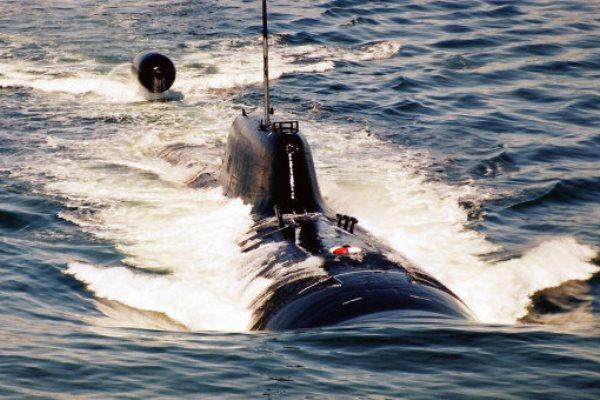The Navy’s top Atlantic Submarine Force commander said Thursday that Russia and China’s ballistic missile submarine development will impact how the U.S deploys its fleet.
Navy Vice Adm. Michael Connor said global threats today are far more numerous and dispersed compared to the Cold War when the U.S. focused solely on Russia. Since the end of the Cold War, the U.S. has treated Russia more like a partner.
However, those goodwill feelings have changed since Russia has shown aggression in its recent conflict with Ukraine and instituted some tactics the U.S. hasn’t seen since the Cold War. Considering Russia’s significant nuclear arsenal, it has drawn the attention of the Navy’s nuclear submarine leaders.
“The Soviet Union devolved into Russia but they kept their nuclear capabilities. They are now re-growing those capabilities and others. As they re-grow, we find that modern Russia appears to have some aspirations both territory-wise and influence-wise that are reminiscent of the way they behaved when we had the Soviet Union,” Connor said.
Last week, Russia broadcast its intent to upgrade its submarine fleet when Russian officials released photos of two Akula II-class nuclear submarines being ferried to a shipyard to receive modernization upgrades.
Along with Russia, the U.S. Navy has taken a closer look at China’s submarine fleet warning that its advancement means the Chinese have a global strike capability, Connor said.
“The world has become multi-polar and we have competition for global influence and power from a rising China -- which is also very much on our mind. The Chinese have had ballistic missile submarines in some form for a while. Their pace has accelerated and they have several nuclear ballistic missile submarines and are continuing to build more,” Connor said.
In February, the Office of Naval Intelligence issued an assessment on the Chinese navy as part of testimony to the US-China Economic and Security Review. ONI leaders found that China’s navy has evolved from a littoral force to one that is capable of meeting a wide range of missions to include being "increasingly capable of striking targets hundreds of miles from the Chinese mainland."
In particular, ONI raised concerns about China’s fast-growing submarine force, to include the Jin-class ballistic nuclear submarines, which will likely commence deterrent patrols in 2014, according to the report. The expected operational deployment of the Jin SSBN "would mark China’s first credible at-sea-second-strike nuclear capability," the report states.
The submarine would fire the JL-2 submarine-launched ballistic missile, which has a range of 4,000 nautical miles and would "enable the Jin to strike Hawaii, Alaska and possibly western portions of CONUS [continental United States] from East Asian waters," ONI assessed.
The report says the Chinese currently have five nuclear attack submarines, four nuclear ballistic missile submarines and 53 diesel attack submarines.
Overall, China's fleet of submarines has quickly increased in offensive weapons technology over the last 10 years. A decade ago, only a few Chinese submarines could fire modern anti-ship cruise missiles. Now, more than half of the conventional attack submarines are configured to fire anti-ship cruise missiles, or ASCMs, the report states.
"The type-095 guided missile attack submarine, which China will likely construct over the next decade, may be equipped with a land-attack capability," the assessment explains. This could enable Chinese submarines with an enhanced ability to strike U.S. bases throughout the region, the report adds.
Overall, Russia and China are firmly committed to have an undersea nuclear deterrent capability with a strong naval component, Connor added.
“We want to resolve minor conflict before they become major conflicts,” he explained.
Connor made his remarks about Russian and China while commemorating the 4,000th strategic deterrence ballistic missile submarine patrol, explaining that undersea nuclear deterrence had its origins in the 1960s. Back then, the U.S needed 41 submarines.
The U.S. Navy’s fleet has since shrunk to 14 nuclear armed submarines based in Bangor, Washington, or Kings Bay, Georgia. The U.S. Navy plans to begin construction of a new-generation of Ohio-class, nuclear-armed ballistic missile submarines by 2021 called the Ohio Replacement program, Connor added.
-- Kris Osborn can be reached at Kris.Osborn@monster.com





























